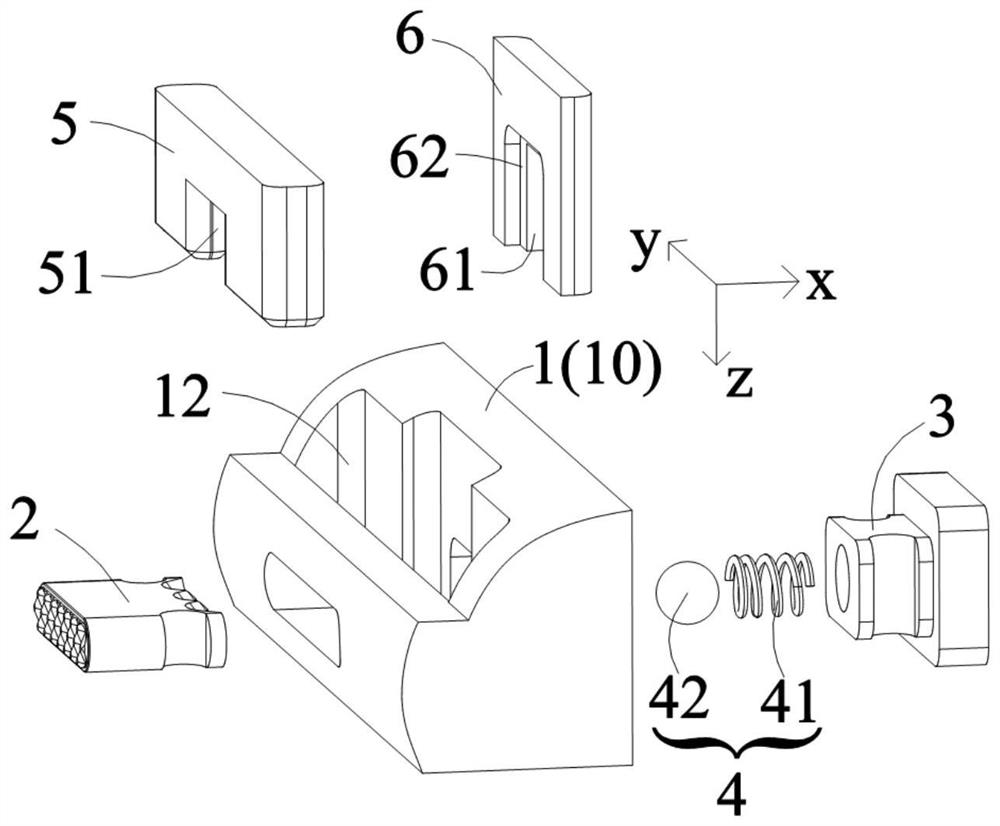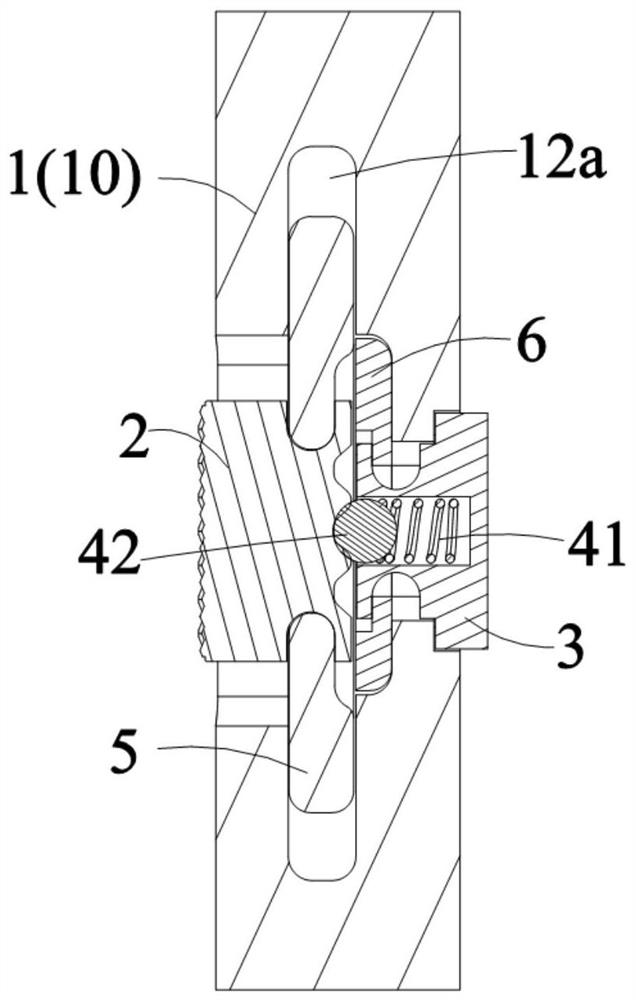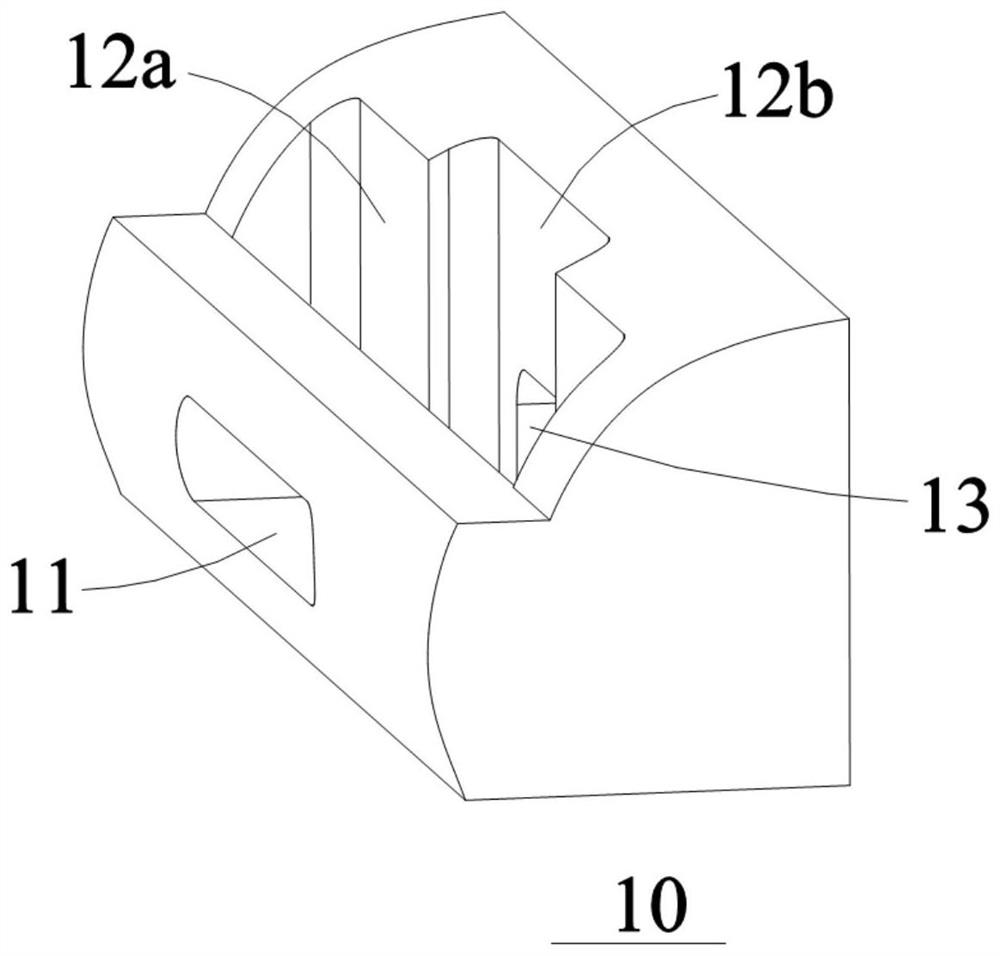Input structure and electronic equipment
A technology of input structure and operating parts, applied in branch equipment, telephone structure, telephone communication, etc., can solve the problems of poor user experience, many times of use, affecting the appearance of electronic equipment, etc.
- Summary
- Abstract
- Description
- Claims
- Application Information
AI Technical Summary
Problems solved by technology
Method used
Image
Examples
Embodiment 1
[0062] An input structure is provided in the embodiment, which can be used in portable electronic devices such as mobile phones, tablet computers, notebook computers, stereos, MP3 players, and MP4 players. Wherein, the user can adjust or change the working state, function or mode of the corresponding electronic device by operating the input structure. The above are only examples of the application of the input structure, and should not be construed as limiting the present application.
[0063] Such as figure 1 and Figure 12 As shown, in the embodiment, the input structure includes a base 1 , an operating member 2 , an elastic positioning component 4 and a detection component 7 . Wherein, the operating member 2 is slidably installed on one side of the base 1 , it can be understood that the operating member 2 can move linearly relative to the base 1 to change the position of the operating member 2 relative to the base 1 .
[0064] The elastic positioning component 4 is dispo...
Embodiment 2
[0074] The embodiment provides an input structure that can be applied to mobile phones; it can be understood that this embodiment is a further improvement on the basis of the first embodiment.
[0075] In the embodiment, the input structure is arranged on the side of the mobile phone, and the base 1 may be a part of the middle frame 10 . Hereinafter, a detailed introduction will be made by taking the operation member 2 sliding up and down along the y-axis direction as an example.
[0076] Such as figure 1 and figure 2 As shown, an assembly space 12 is provided inside the middle frame 10, and at least one of the front and rear sides of the assembly space 12 communicates with the outside world. In this embodiment, the rear side of the assembly space 12 communicates with the outside world. Specifically, such as figure 2 As shown, the side close to the outside of the paper may communicate with the outside world.
[0077] Such as Figure 2 to Figure 4 As shown, one side of ...
Embodiment 3
[0125] Such as Figure 11 to Figure 13 As shown, the present application provides an electronic device, including the input structure provided in Embodiment 1 or Embodiment 2.
[0126] In an embodiment, the electronic device may be a mobile phone.
[0127] In some other embodiments, the electronic device may also be a tablet computer, a notebook computer, an audio system, an MP3 player, an MP4 player, and the like.
[0128] Wherein, the base 1 is a part of the middle frame 10 of the electronic device, and the execution part 23 of the operating element 2 is located outside the electronic device, so that it is convenient for the user to perform related operations. The signal generator 71 in the detection component 7 can be directly arranged on the main board 8 of the electronic device, and the signal generator 71 is electrically connected with the main control unit of the electronic device.
[0129] During use, the user can switch the working state, mode or function of the ele...
PUM
 Login to View More
Login to View More Abstract
Description
Claims
Application Information
 Login to View More
Login to View More - R&D
- Intellectual Property
- Life Sciences
- Materials
- Tech Scout
- Unparalleled Data Quality
- Higher Quality Content
- 60% Fewer Hallucinations
Browse by: Latest US Patents, China's latest patents, Technical Efficacy Thesaurus, Application Domain, Technology Topic, Popular Technical Reports.
© 2025 PatSnap. All rights reserved.Legal|Privacy policy|Modern Slavery Act Transparency Statement|Sitemap|About US| Contact US: help@patsnap.com



